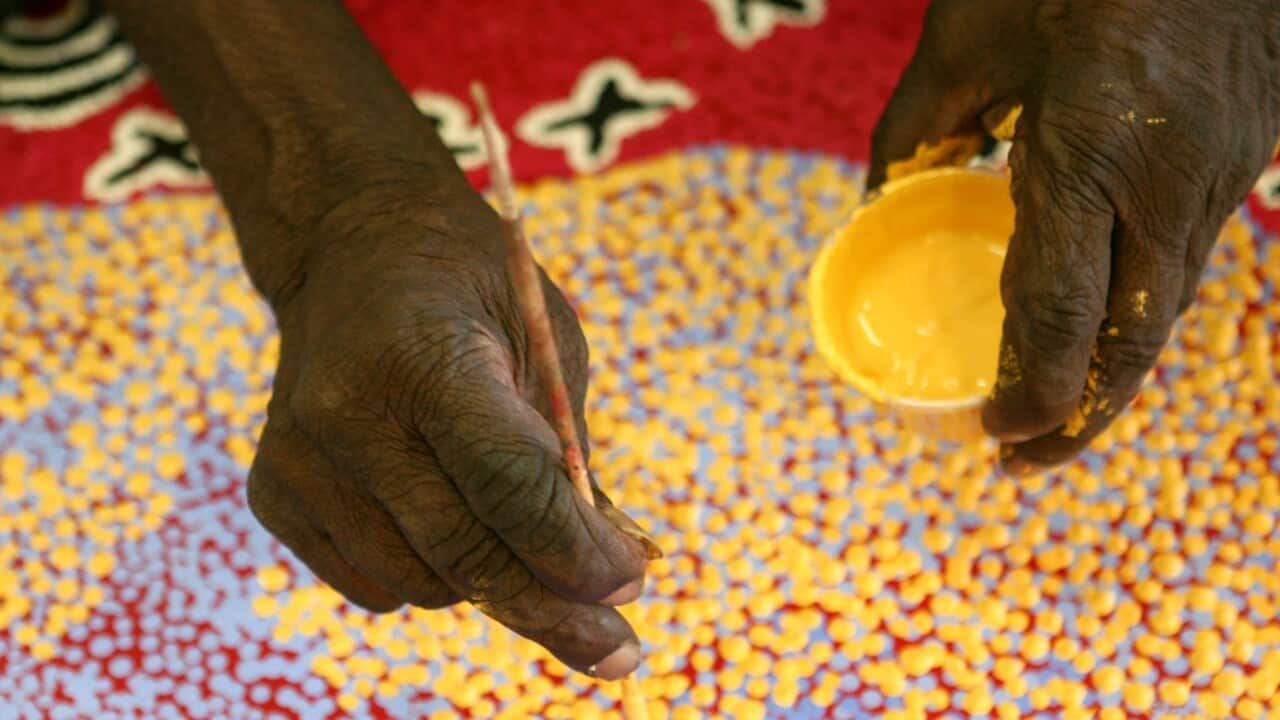One of the country's most well-known Indigenous art galleries has been referred for further investigation following a government probe into its practices.
The APY Art Centre Collective(APYACC) which represents artists from the Anangu Pitjantjatjara Yankunytjatjara Lands, became the subject of a South Australian probe after allegations were aired in The Australian newspaper regarding white staff assisting with artworks.
Led by an independent panel involving Anne Sibree, Megan Krakouer and Cameron Costello, the review made no findings of its own, but has asked the Office of the Registrar of Indigenous Corporations as well as the ACCC to investigate historical allegations made against the APYACC.
Those bodies have the authority to make criminal referrals.
The APYACC has consistently denied any malpractice, and.
Sally Scales, a central figure at the APYACC and a NGA board member, says the ongoing process has been a hit to the collective.
"We are one of the most scrutinised Indigenous arts organisations, which has been really hard for us to go through as artists, being constantly examined, what we do as artists, our practises," the Pitjantjatjara woman told the ABC.
"But what we see time and time again is that we were cleared.
"My Elders have worked so hard for me, for the younger generation to have a platform that we could go on to, and I think for us to be examined so crucially and so hard when that examination is not happening in other elements of the First Nations art space."
Ms Scales recused herself from the NGA investigation, citing the conflict of interest arising from her association with both entities.
Calls for management overhaul
Arts minister and Attorney-General for the Northen Territory, Chansey Paech, said the ongoing investigations showed the need for a national consistent framework for managing Indigenous galleries.
“The NT is prepared to work with the federal government and other jurisdictions on this (policy),” Mr Paech told The Australian.
“The policy needs to be nationally consistent because a number of peak art bodies such as Desart and ANKA (Arnhem, Northern and Kimberley Artists) are based on cultural boundaries rather than state boundaries.”
The allegations aired early this year centred around white assistants working on Indigenous artworks at the behest of their Aboriginal creators.
One video appeared to show an assistant helping with the painting of a culturally sensitive work depicting Tjukurrpa, the sacred songlines of the central desert region.
Whether such action is legitimate has also been a subject of debate.
“Most Aboriginal artists are painting tjurkurpa, which is an ancestral right that is handed down through families,” said Mr Paech.
“It is more than art: it’s law, culture and history. Only certain people have the right to paint tjurkurpa, which is often specific to their totems and kinship groups.”
“What matters is to make sure that people have creative control.
“But I certainly have no intention of implying a standard and set of rules around First Nations artists that are not applied to any other artists in the world or throughout history.”










